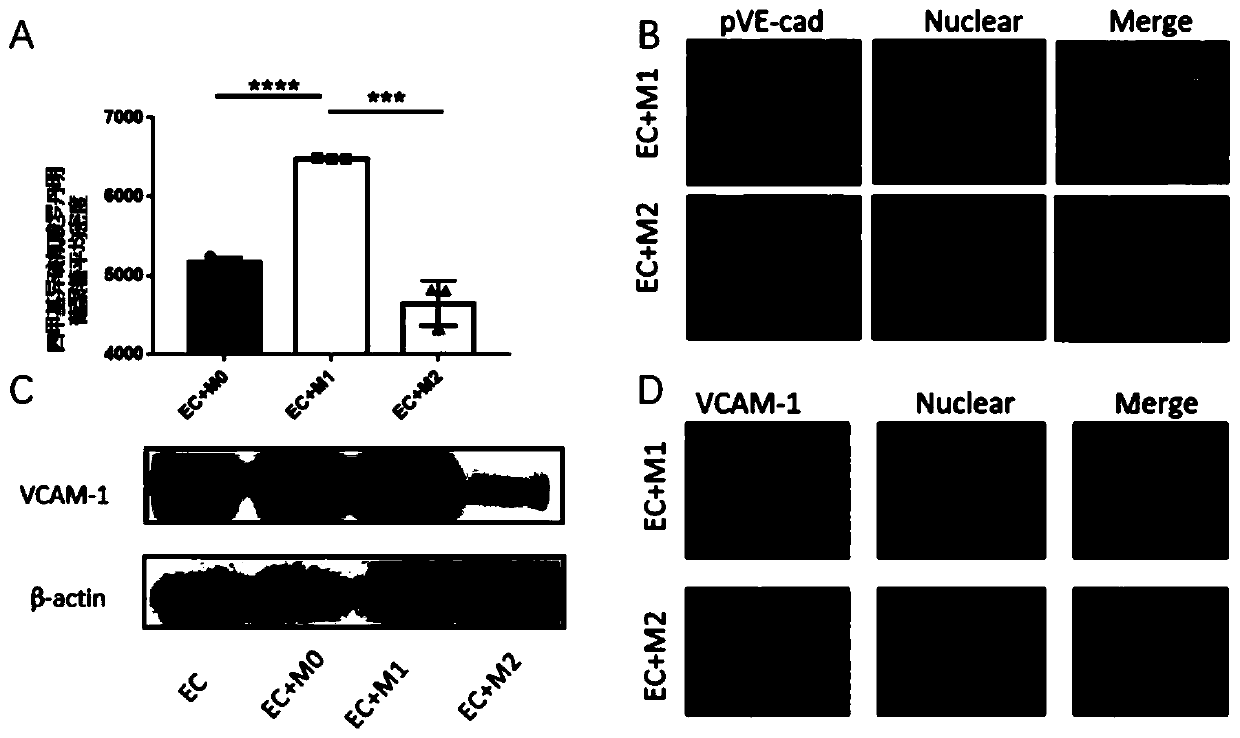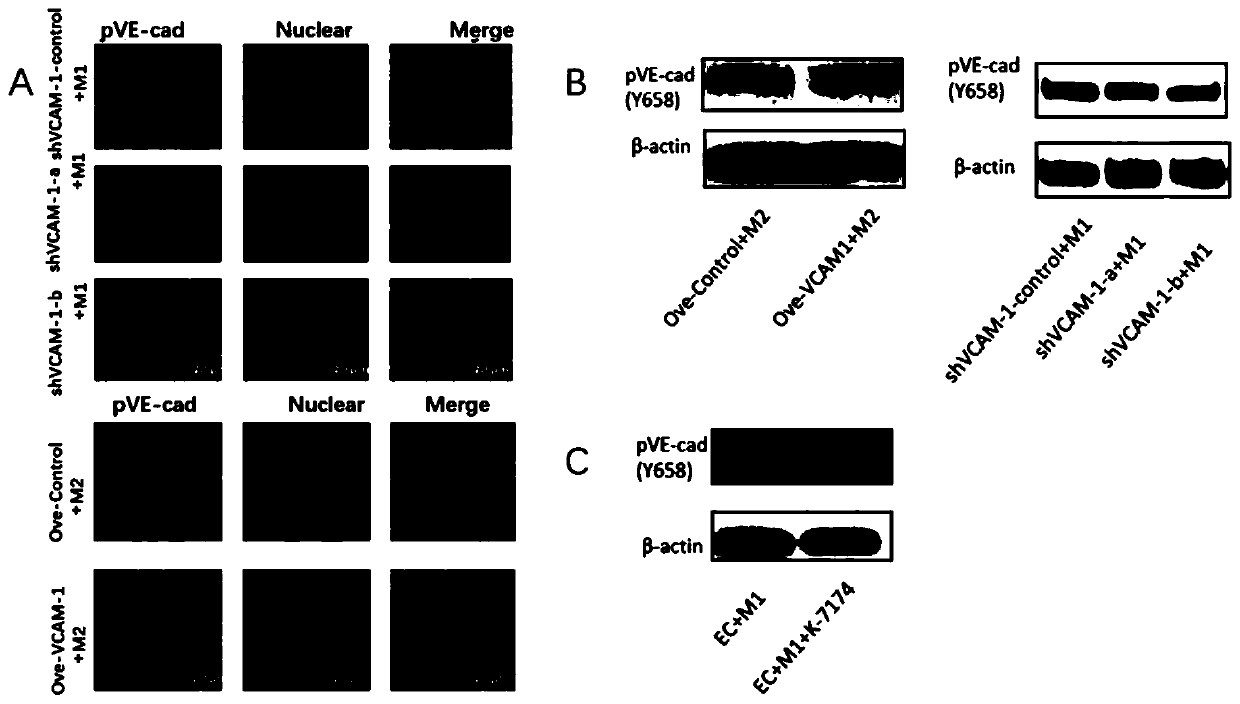Application of macrophage in blood vessel barrier protection, and prevention, inhibition and treatment of ovarian cancer ascites
A technology for macrophages and blood vessel protection, applied in the field of diagnosis and treatment of gynecological diseases, to achieve the effect of protecting blood vessel barriers
- Summary
- Abstract
- Description
- Claims
- Application Information
AI Technical Summary
Problems solved by technology
Method used
Image
Examples
Embodiment 1
[0035] Example 1 M2 macrophages reduce the permeability of endothelial cells by inhibiting VCAM-1
[0036] 1. Experimental process of penetration analysis of tetramethylrhodamine dextran (TRITC-dextran, mw=70kDa)
[0037] The transport of TRITC-dextran (70kDa) in co-culture of endothelial cells and macrophages was investigated to determine the permeability of endothelial cells. will be 10 5 Human umbilical vein endothelial cells were plated in the upper chamber of the transwell, and after 24 hours, different subtypes of macrophages were added to the upper chamber and co-cultured for another 24 hours. After incubating 2 mg / mL TRITC-dextran in the upper chamber for 3 hours, the fluorescence intensity of TRITC-dextran was measured at an excitation wavelength of 530 nm and an emission wavelength of 540 nm, respectively.
[0038] 2. Immunofluorescence staining experiment process
[0039] For immunofluorescence analysis of cultured cells, cells grown on coverslips were fixed, mem...
Embodiment 2
[0045] Example 2 VLA-4 is down-regulated in the co-culture system with M2 macrophages and endothelial cells
[0046] Different subtypes of macrophages and endothelial cells were co-cultured to investigate the expression of VCAM-1 ligand VLA-4, the results are as follows image 3 . from image 3 As can be seen in A, the expression of VLA-4 in M2 macrophages was down-regulated in the co-culture system, which is consistent with the down-regulation of VCAM-1 expression in the co-culture system. from image 3 Immunofluorescence of B shows attenuated expression of VLA-4 in M2 macrophages in the co-culture system.
[0047] In this example, the overexpression and knockdown models of VLA-4 in macrophages were also established by plasmid transfection. VLA-4 knockdown macrophages and macrophages pretreated with VLA-4 inhibitor (CDP323) ( image 3 C) After addition to endothelial cells, decreased phosphorylation of VE-cadherin was observed, and increased phosphorylation of VE-cadheri...
Embodiment 3
[0048] Example 3 Reduced ROS generation when endothelial cells were co-cultured with M2 macrophages
[0049] In order to verify whether ROS, as a downstream molecule of VCAM-1, participates in the role of macrophages in regulating the permeability of endothelial cells, this example detected the expression of ROS in different co-culture systems, proving that ROS is a permeability-inducing factor.
[0050] Reactive oxygen species levels were determined using the dichlorodihydrofluorescein diacetate (DCFH-DA) assay. Cells were resuspended in PBS and stained with 10 μM DCFH-DA for 20 min at 37°C in the dark. After washing 3 times with PBS, PBS buffer was added to the cells. The relative fluorescence intensity at the indicated time was recorded using a flow cytometer with an excitation wavelength of 488 nm and an emission wavelength of 525 nm. The result is as Figure 5 and Figure 6 shown, from Figure 5 In the left panel of A, it can be seen that the reactive oxygen species ...
PUM
 Login to View More
Login to View More Abstract
Description
Claims
Application Information
 Login to View More
Login to View More - R&D
- Intellectual Property
- Life Sciences
- Materials
- Tech Scout
- Unparalleled Data Quality
- Higher Quality Content
- 60% Fewer Hallucinations
Browse by: Latest US Patents, China's latest patents, Technical Efficacy Thesaurus, Application Domain, Technology Topic, Popular Technical Reports.
© 2025 PatSnap. All rights reserved.Legal|Privacy policy|Modern Slavery Act Transparency Statement|Sitemap|About US| Contact US: help@patsnap.com



